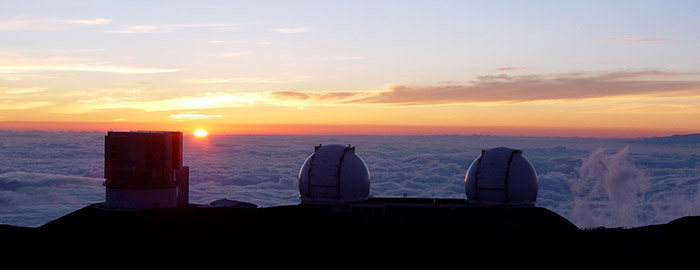Baker, Mary Tuti 2016. Hawaiian Issues. In: Contemporary Pacific (28) 1: 220 - 227.
Blatner, David 2013. Extreme Welten. Unser unfassbares Universum von unendlich klein bis unendlich. München: Berlin Verlag.
Ciotti, Joseph E. 2010. Museums and Planetariums: Bridging the Gap between Hawaiian Culture and Astronomy through Informal Education – a Case Study. In: Forum on Public Policy Online. http://forumonpublicpolicy.com/spring2010.vol2010/spring2010archive/Ciotti.pdf (23.6.2016).
Clarke, Michael Tavel 2007. These Days of Large Things. The Culture of Size in America, 1865-1930. Ann Arbor: University of Michigan Press.
Gould, Stephen Jay 1983. Der falsch vermessene Mensch. Basel u.a.: Birkhäuser.
Hall, Stephen S. 2006. Size Matters. How Height Affects the Health, Happiness, and Success of Boys – and the Men They Become. Boston, u.a.: Haughton Mifflin Company.
Haustein, Heinz-Dieter 2004. Quellen der Messkunst. Zur Mass und Zahl, Geld und Gewicht. Berlin: Walter de Gruyter.
Hollenstein, Roman 2001. Aufstieg und Fall der Wolkenkratzer. Mehr als Symbole wirtschaftlicher Potenz. In: NZZ 17.9.2001. http://www.nzz.ch/article7N93E-1.476463 (14.4.2016).
Jäggi, Simon 2016. Asylverfahren. In einer Woche um drei Jahre gealtert. In: Surpise. Strassenmagazin Nr. 373. Basel: Verein Surprise, 10 – 13.
Kihara, Yuki 2016. Yuki Kihara and John Pule – a joint exhibition at the Auckland Art Gallery Toi o Tamaki, NZ. https://shigeyukikihara.com/2015/12/10/yuki-kihara-and-john-pule-a-joint-exhibition-at-the-auckland-art-gallery-toi-o-tamaki-nz (23.6.2016).
Kuczinski, Alex 2006. Beauty Junkies. Under The Skin of the Cosmetic Industry: New York: Random House.
Levinson, Marc 2006. The Box. How the Shipping Container Made the World Smaller and the World Economy Bigger. Princeton: Princeton University Press.
Murdin, Paul 2010. Die Kartenmacher. Der Wettstreit um die Vermessung der Welt. Mannheim: Artemis & Winkler.
Naumann, Barbara 2013. Kontrollierte Körper. Die Germanistin Barbara Naumann über Körper, Kultur und Kunst. In: Haut-Nah. Magazin zur Ausstellung «Make up – Aufgesetzt, ein Leben lang?». Basel: Museum der Kulturen,
Plunz, Richard 1996. Grösse als falsche Fährte? In: Das Grosse – On Bigness. Daidalos Architektur Kunst Kultur 61, 128 – 131.
Robinson, Andrew 2007. Das Abenteuer der Vermessung. Vom Urmeter zum IQ. Hamburg: G+J/RBA GmbH & Co KG.
Schüttpelz, Erhard 2005. »Sie zu messen, war leider trotz aller Mühe, die ich mir gab, und trotz aller Geschenke unmöglich”. Die anthropometrische Interpellation. In: Theile, Gert (Hg.): Anthropometrie. München: Wilhelm Fink Verlag, 139 – 154.
Smith, Timothy Paul 2013. How Big Is Big and How Small Is Small. The Sizes of Everything and Why. Oxford: University Press.
Stirn, Alexander 2015. Frust Hawaii. Astronomen und Ureinwohner kämpfen um den höchsten Vulkan der Inselgruppe. Stört dort die Baustelle für ein gigantisches Teleskop die Ruhe der Götter? In: Zeit online. http://www.zeit.de/2015/39/hawaii-astronomie-teleskop-vulkan-mauna-kea-streit-indigene (30.3.2016).
Stone, Maddie 2015. Warum Physiker glauben, dass unser Universum ein gigantisches Hologramm ist. In: Motherboard. http://motherboard.vice.com/de/read/immer-mehr-indizien-deuten-darauf-hin-dass-unser-universum-ein-gigantisches-hologramm-ist-267 (30.3.2016).















































